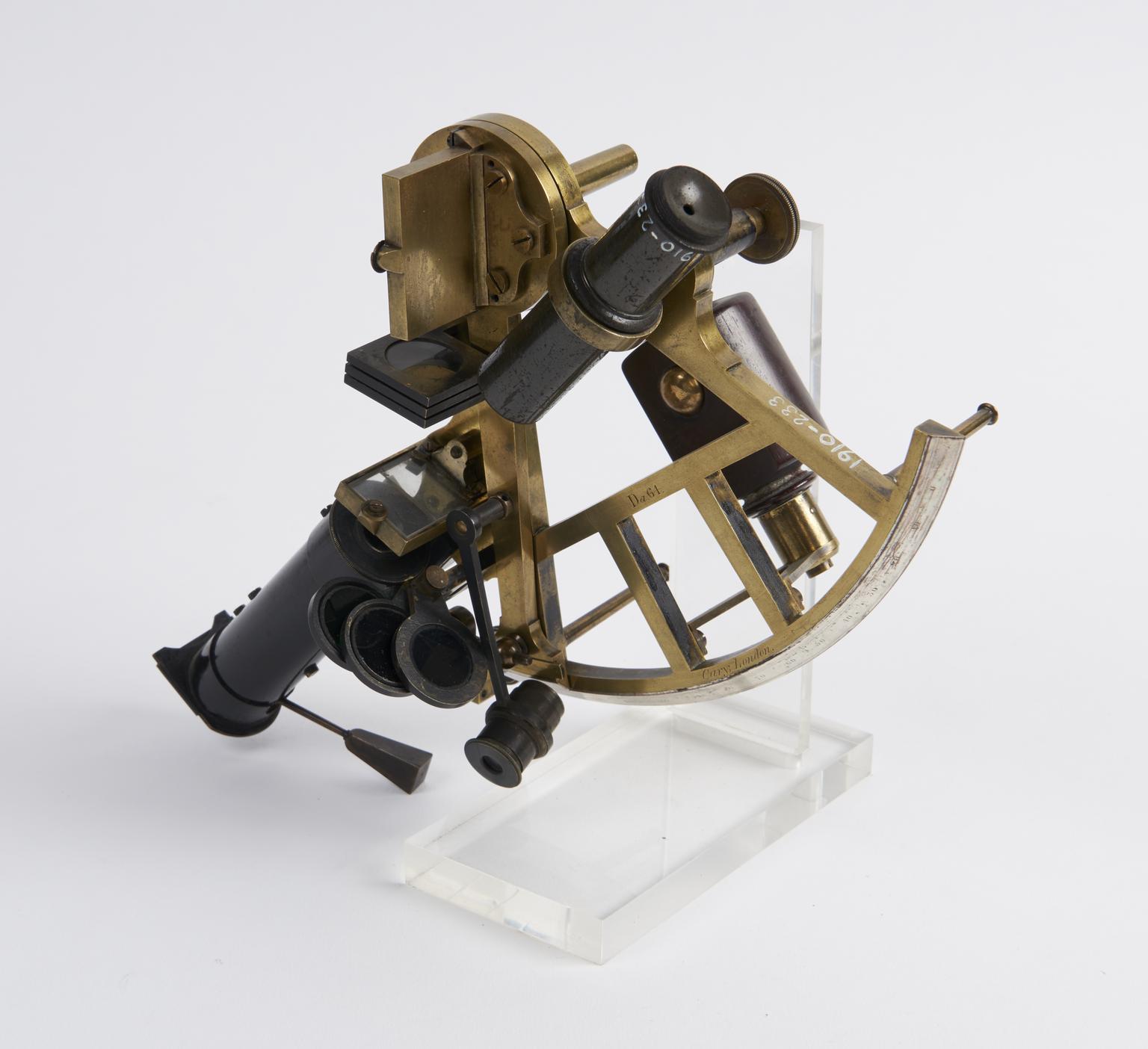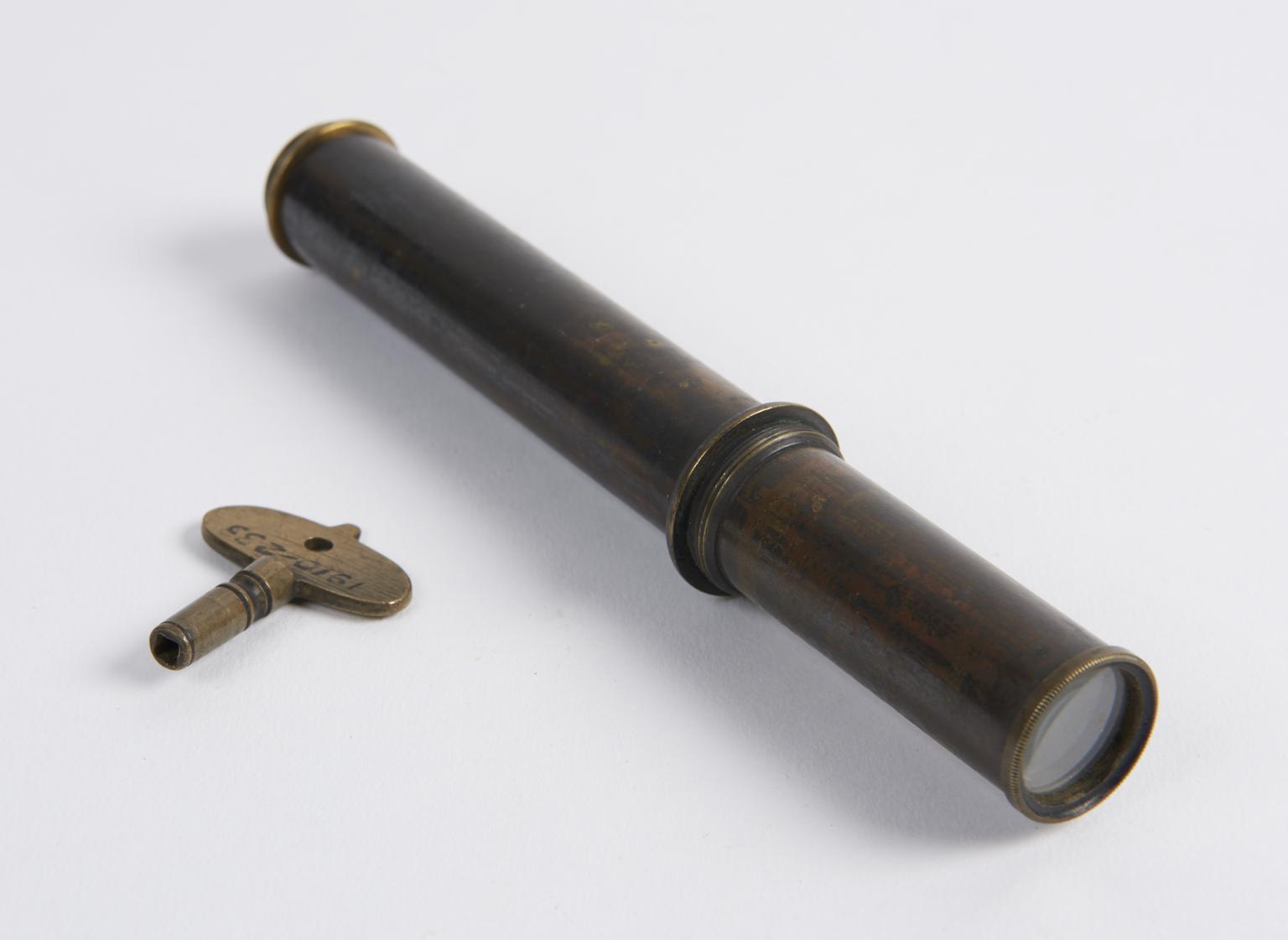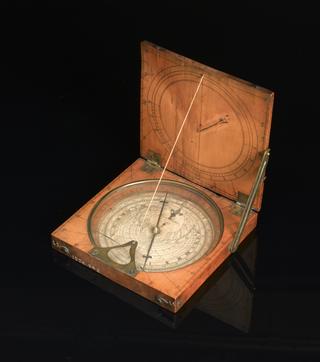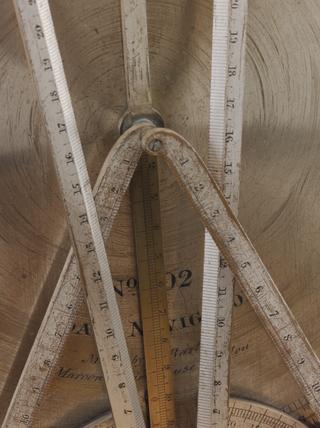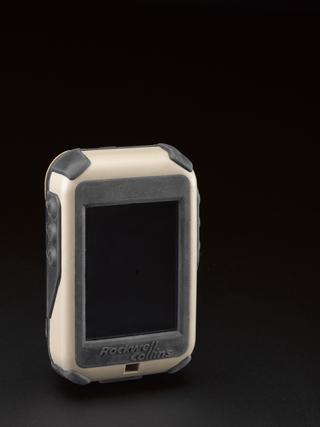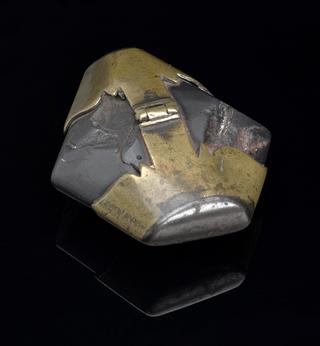Brass sextant with lacquered frame and limb, wooden handle and fitted with artificial horizon invented by Alexander Bridport Becher in 1834, and made by William Cary, London, England, 1835-45. Consists of inlaid polished silver 126° scale (-5° to 150°) with 20’ divisions and silver vernier (20”), three index-filter shades (red & 2 green), three horizon filters (red & green), scale magnifier on 55mm swivelling arm. Fitted with threaded telescope bracket for sighting telescopes (151mm – inverted image). The horizon consists of a 93-mm-long anodized brass tube with a bracket for attaching it to the sextant. The tube contains a pendulum that is lowered into a conical attachment (missing) filled with almond oil to dampen the pendulum's movement. A separate oil lamp (missing) can be fixed to the bracket for illumination at night.
